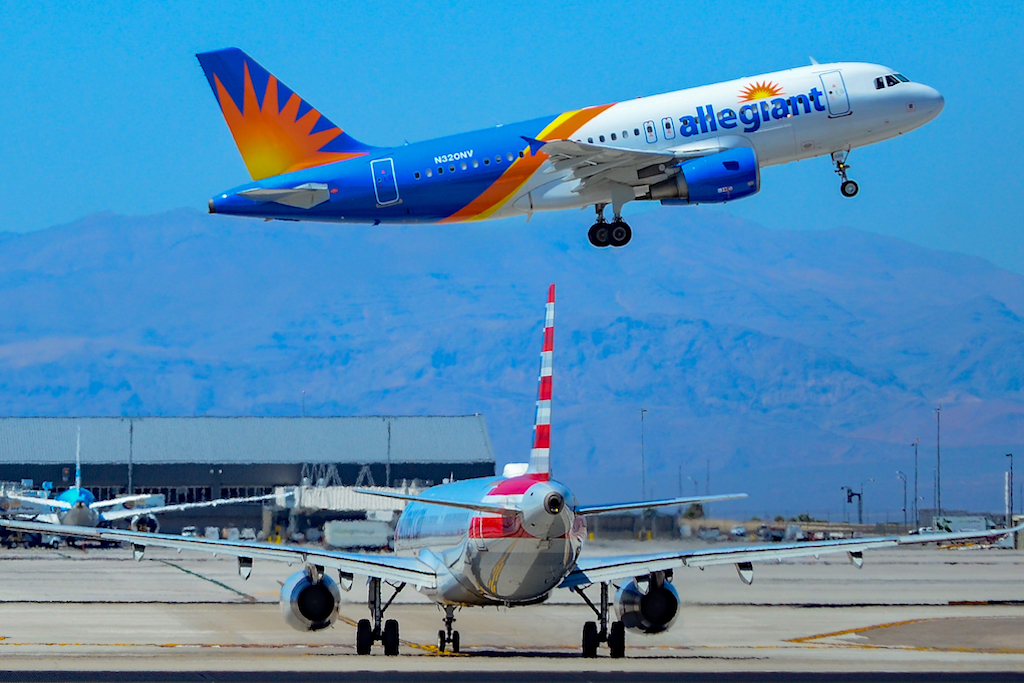What Allegiant Air's Bad Quarter Suggests About the Future of Budget Carriers

Photo Credit: Flickr / Tomás Del Coro
Allegiant Air was once among the most regularly profitable airlines in the world. Then came the pandemic and in the third quarter, when almost every U.S. carrier made money, the discounter joined only Hawaiian Airlines in posting a loss.
Las Vegas-based Allegiant reported an operating margin of just 2 percent on a net loss of $10 million in the third quarter. This is quite the turn from the 20 percent operating margin it generated for all of 2019. What, then, is Allegiant’s problem?
During the airline's earnings call on Wednesday, Evercore ISI analyst Duane Pfennigwerth asked point blank: “You still lost some money, which is historically unusual for Allegiant. What would you point to as the biggest drivers of your loss in 3Q?” Executives responded by mentioning, for one, Hurricane Ian’s $4 million hit to revenues. Southwest Florida, where the hurricane did most of its damage, is home to Allegiant's busy Punta Gorda base, and even its hotel project, Sunseeker. Pilot attrition was a separate problem that contributed to costly operational distress, and prevented the airline from fully taking advantage of peak periods. In the meantime, costs are way up from 2019 levels in categories like fuel, labor, and airports.
To be clear, the third quarter tends to be an offpeak period for Allegiant, whose Sun Belt-heavy destinations tend to do better in cold weather months. Still, the airline did a lot better in the September quarter of 2019 this past quarter.
This is uncharacteristic for Allegiant, long one of the industry's profit superstars. Throughout the 2010s, this performance was driven by the airline's unique business model that turned a central tenet of airline economics on its head. Rather than flying planes as much as possible to wring more revenue from a fixed base of costs — that’s the concept Southwest Airlines made famous — Allegiant de-emphasized asset utilization, including simply parking planes during times of softer demand. The approach served it well even during the height of the pandemic when Allegiant posted milder losses than many of its peers. In the final quarter of Covid-era mass red ink for the U.S. airline industry — the first quarter of this year — Allegiant stood out as one of only two U.S. scheduled passenger airlines that managed an operating profit (Sun Country was the other).
The shift began in the second quarter. Allegiant’s operating performance was a below-average 4 percent. And then the third quarter, where as mentioned that performance lagged all but Hawaiian in the U.S.
For the current October-to-December quarter, Allegiant told investors to expect an 8 percent operating margin; still a far cry from the 20 percent figure it produced in the same quarter three years ago. Interestingly, Hawaiian aside, America’s three ultra-low-cost carriers — Allegiant, Frontier Airlines, and Spirit Airlines — were the U.S. industry’s worst third quarter performers in terms of operating margins. Does this signal the post-pandemic demise of the ULCC business model, as United Airlines CEO Scott Kirby suggested in October?
"The whole [ULCC] business model is predicated on three things: One, growing 15-20 percent a year; two, jamming people in like sardines; and three, it's nickel-and-diming them ... to death with add-on fees they don't know [about] until they show up at the airport," Kirby said. "I think that's a doomed business model."
Allegiant vigorously disagrees. It asserts that a rising fare environment will ultimately lead travelers to trade down to lower-fare carriers. And, as a predominantly leisure airline, Allegiant stands to benefit from important structural demand changes, including the “unprecedented number of baby boomers who retired the past two years and now have the discretionary time to travel more.” Sure enough, Allegiant says the number of customers age 60 or older has increased by more than 60 percent since 2019.
And Allegiant executives are firmly behind the notion that people are increasingly combining work and leisure travel, estimating from surveys that about 15 percent of its passengers are now doing so. They added that nearly 60 percent of the airline's passengers are flying to visit family and friends. Another 15-20 percent are flying to a second home or vacation home. These new patterns should make offpeak months like September busier, which was in fact the case this year. Travel demand looking forward continues to be strong.
For now, priority number one for Allegiant is securing a new pilot contract. The airline is negotiating with flight attendants, too. New contracts with higher pay would help ensure the staffing it needs for the capacity growth it is planning. That includes the new Boeing 737 Maxes that Allegiant ordered in January. As things stand now, they are due to start arriving next October. But delays are a concern, as is the uncertified status so far of the 737-7 it ordered. Allegiant also has firm commitments for 20 -8200s.
The Max’s lower unit costs should help offset some inflation over time. That aside, Allegiant has other plans to boost revenues, including a planned U.S.-Mexico joint venture with (and investment in) Viva Aerobus. The Sunseeker resort should open next year. The airline is now charging for extra legroom seats. And management sees more gains from the growing adoption of its co-branded credit card with Bank of America. Allegiant is also expanding the options of hotels that visitors to its website can book.
